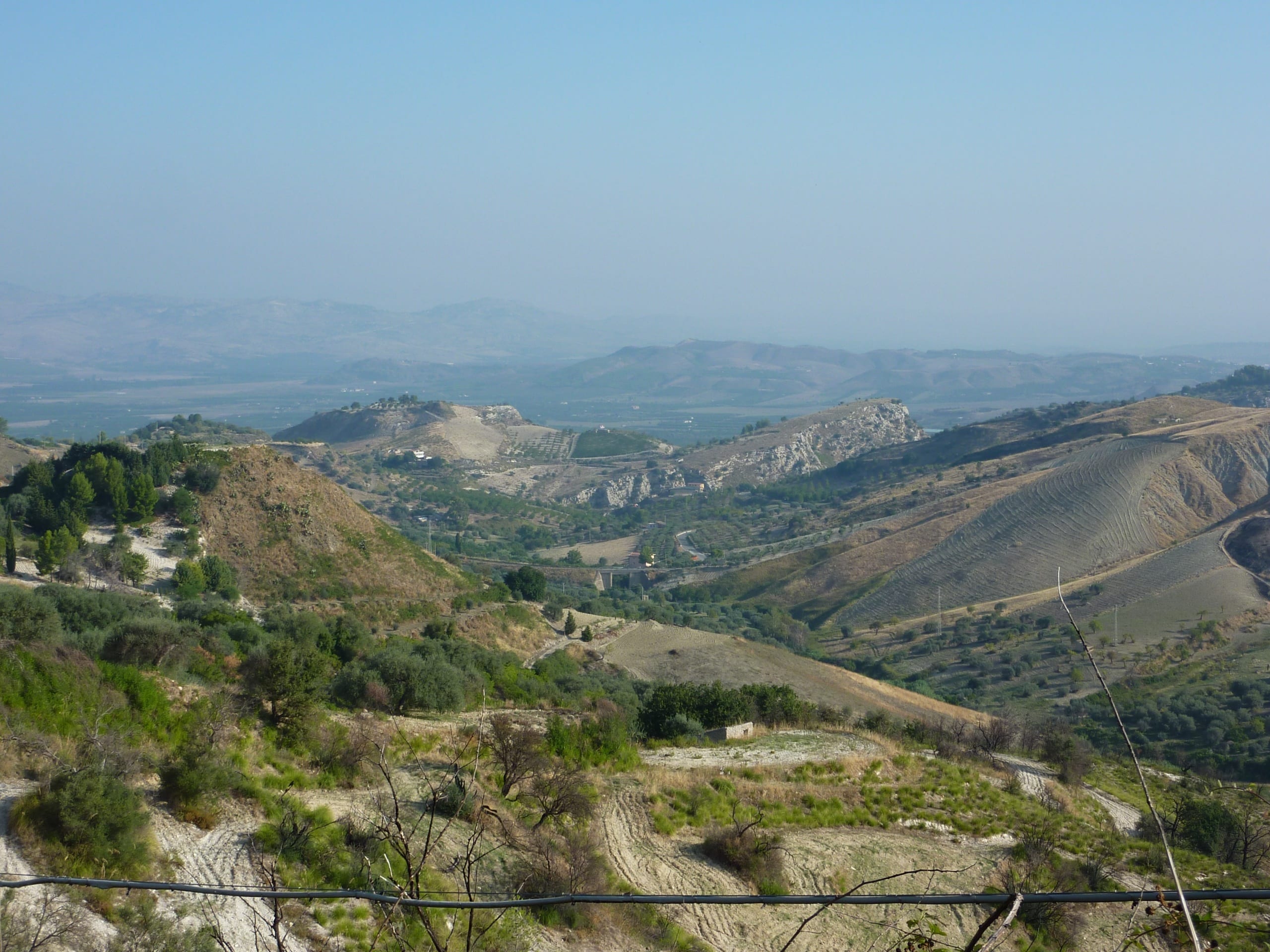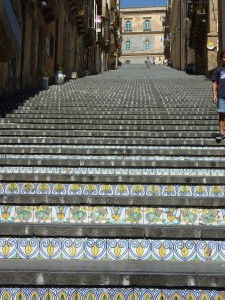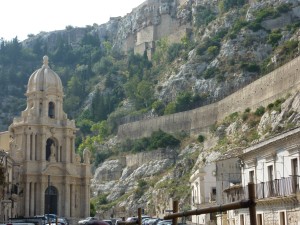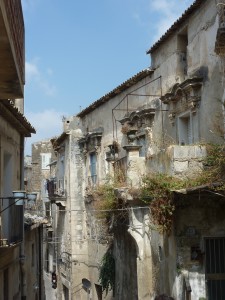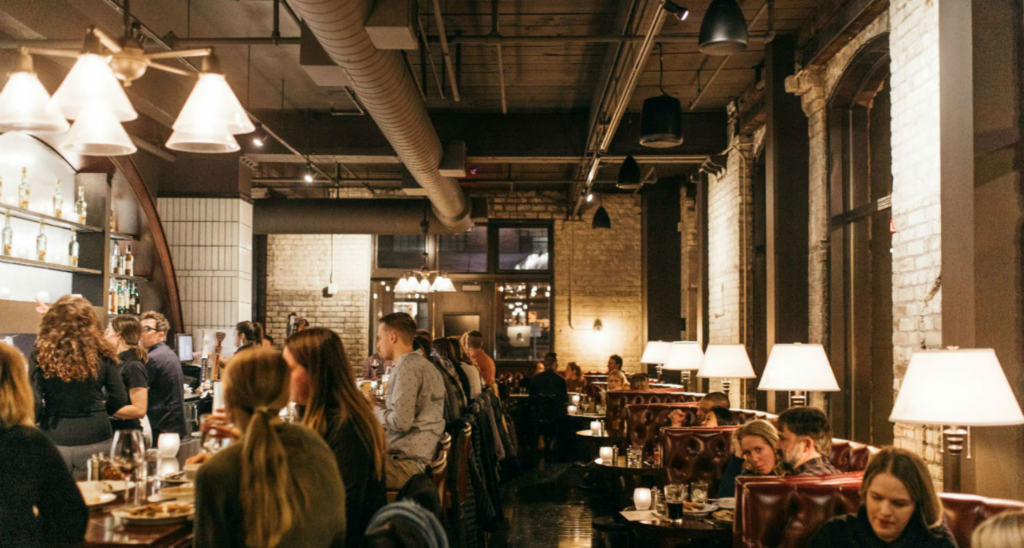September 13, 2016
It’s not that we didn’t want to go to Sicily.
We were supposed to go bicycling in the Dolomites. But, apparently we were the only idiots who wanted to bike ride in a mountain range to elevations of 11,000 feet, so they cancelled the trip for September and we had to re-direct our travel.
We hadn’t thought about Sicily, but it sounded great. It was historic, land-and-sea-focused, and had lots and lots of hills. (We must have been in our ill-fated, short-lived “We can ride mountains!” phase.) And it was still Italy.
Or was it?
Upon arriving in Catania from Rome, it immediately felt different. The Baroque architecture (called Sicilian Baroque architecture) felt slightly Italian, but there was a very different Mediterranean feel. (For hotels, try the Romano House.)
And the Sicilians have fought to stop the rest of Italy from building a bridge to the island for generations. They don’t want their way of life diluted by the crazy mainland Italians. It’s another one of those “slightly” old places (yeah, 3000 BC). The Greeks colonized it in 8th century BC, and you can still feel that ancient influence in Siracusa.
It’s known as the gateway to Europe from Africa and the Mediterranean, and yet another place that almost every civilization has taken control of throughout history. There are Roman, German, Spanish, Catalan, Byzantine, Norman, and Islamic influences. It’s where the allies took the first step back on European soil in the quest to defeat the Nazis. It’s the ultimate mutt, steeped in the richest of history.
Oh, and it has earthquakes and volcanoes. (Ever hear of the overly ambitious Mount Etna?)
Our trip primarily concentrated on the central and southeastern part of the island, in the shadow of that damned Mount Etna. (For your technical geographic reference, Sicily looks like a clump of grass the boot known as Italy is trying to kick away.)
Catania is the best starting point, and it’s all about fish and the fish market. Wandering down into the market early-early in the morning, you’ll see one of the most active fish markets in the world. It’s the bounty that can only come from a place surrounded by the richest fishing waters. And the creatures you’ll see? Colorful, fresh, and somewhat freaky.
What’s great about Catania is that when you go to that same fish market at night, it’s completely transformed into a collection of romantic little restaurants—and the only reminder of the earlier market is the fresh fish all over every menu.
We bicycled out to Catania and quickly found out about the hills. Everything was up and down. And much like the rest of Italy, it was packed with picture-perfect towns, each one more charming than the last.
And each one almost always perched at the peak of a hill. Usually a big hill. A really big hill. And we thought we could handle the Dolomites?
Over 5 days of cycling, we bicycled 20,000 vertical feet. The Dolomites may have been easier.
We basically bicycled through a region where everyone makes a living from the land or the sea. The backdrop was a real-life watercolor painting of these amazing historical buildings and towns.
Our route took us from Catania to the valley (and world heritage site) Val di Noto. The towns throughout here were all destroyed by the 1693 earthquake.
We wound our way through the ancient city of Vizzini to Caltagirone, with its 142 tiled steps (a classic Silician photo opp, with the reward of an abundance of gelato shops)
to Ragusa to Modica to Donnalucata and Donnafugato, ending in Siracusa.
Food and Wines that define Sicily:
Seafood. The freshest you may find. And they blend it with a little influence from their mainland friends with the olive oil, pasta, meats, and bread.
The wines that define the region are Primitivo and Nero D’Avola. They are just what we like: big, hairy, and dirty.
Highlights were:
- Citrus trees with the omnipresent scents of lemon, orange, and cherry blossoms wafting around (see, that’s why you should be on a bike).
- Modica, for the famous Duomo (one of the seven wonders of the Baroque world) AND the oldest chocolate shop on the island.
- Sicily’s cave dwellings.
- Ragusa’s with the beautiful old city perched on a hill (There is an upper and lower Ragusa. Ragusa Ibla and Ragusa Superiore) and the views from both at both makes it one of the most picturesque towns we’ve ever seen.
- Siracusa: Along with Catania, you need to spend some time in Siracusa. The history in this 2,700-year-old city even overshadowed much we’d seen along the way. It’s notable for Greek history,culture, amphitheaters, and architecture, and it was one of the major powers of the Mediterranean world with its location in the southeast corner of the island. It even made it into the Bible (Acts of the Apostles, Paul slept here kind of reference). For a break from the baroque, stay at Palazzo Cavalieri.
Take that, Dolomites.


